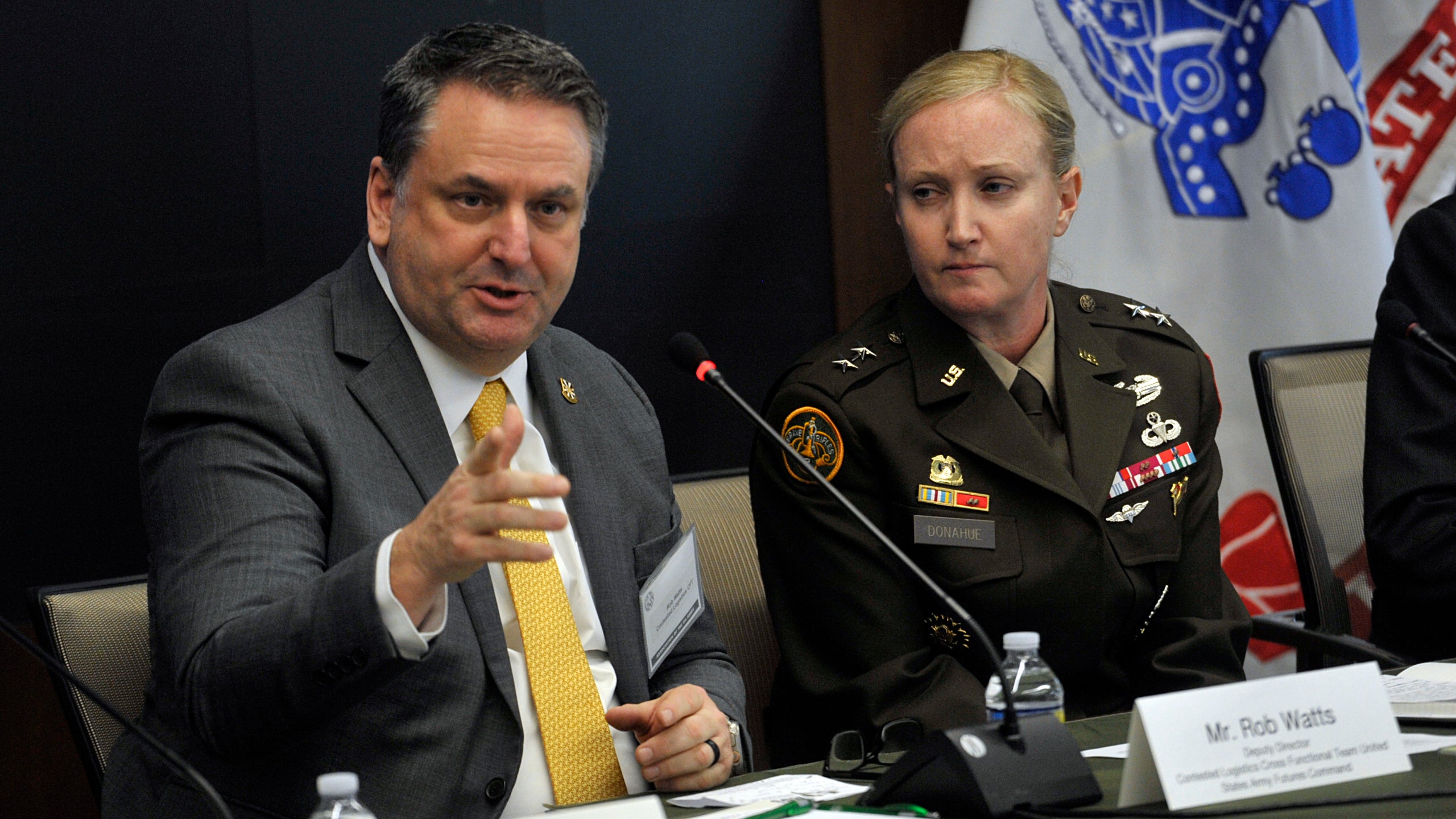Army Seeks Sustainment Precision, Automation
Army Seeks Sustainment Precision, Automation

Faced with an increasingly contested operating environment, the Army is working to deliver precision sustainment and incorporate autonomous vehicles for resupply missions.
“Everybody agrees that we’ve got to get after logistics in this contested environment,” said Rob Watts, deputy director of Army Futures Command’s Contested Logistics Cross-Functional Team.
Speaking Feb. 7 during an Association of the U.S. Army Hot Topic on contested logistics, Watts said the Contested Logistics Cross-Functional Team’s first “priority effort” is predictive logistics.
“In the future, we can no longer afford to deliver two times or three times what that particular location or [area of operations] requires,” Watts said. “We don’t have the assets to move it or the assets to deliver it, so we’re going to need more precision.”
This could include using artificial intelligence tools or autonomous vehicles, which ties into another key effort for the team—autonomous resupply vessels, Watts said.
“We have to leverage machines,” he said. “We’ve got to figure out how the human and machines are integrated on the battlefield.”
The intent behind the autonomous resupply vessels would be to buy “lots of them,” Watts said, “where you can kind of envision a swarm of these autonomous vessels going out to various island chains, delivering … ammo or blood or whatever it is, and take it to the point of need.”
The cross-functional team continues to build on that concept, Watts said, and is looking at autonomous tracks, watercraft, aerial vehicles and more.
Advanced power is another effort, as the Army looks to reduce its reliance on fossil fuels, Watts said.
Ultimately, the goal is to reduce demand for sustainment, he said, adding that if the cross-functional team’s first three efforts are successful, demand will naturally go down. Precision sustainment means fewer trucks on the road, he said as an example.
Maj. Gen. Michelle Donahue, commanding general of Army Combined Arms Support Command, who spoke on the panel alongside Watts, agreed.
From 1970 to today, the Army’s fuel demands have increased 374%, she said. Demand for maintenance has grown 37%, she said.
“If we want to ensure sustainment isn’t a crippling piece, from a warfighter’s perspective, we’ve got to reduce demand,” she said. “The sustainment community cannot continue to be the growth industry for the United States Army.”
The Contested Logistics Cross-Functional Team, the Army’s ninth and newest cross-functional team focused on the service’s modernization priorities, is an enduring effort, Watts said. “This problem is not going to go away after we deliver our first four or five capabilities,” he said. “The environment is going to continue to change, the other signature modernization efforts are going to change, so we’re going to continue to shift.”

